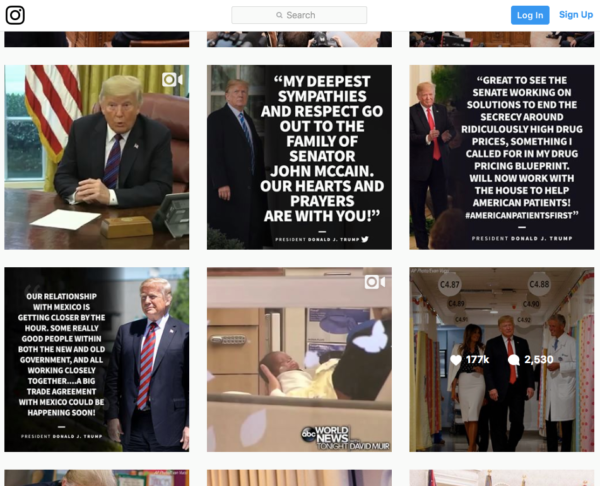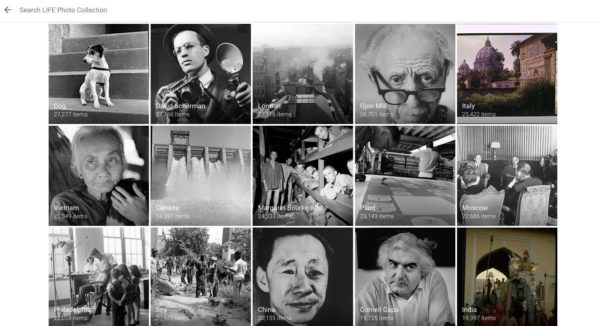Laurens Otto is a curator, art critic and the co-director of the Bureau for Cultural Analysis. He is currently setting up the magazine RESOLUTION which will investigate how the digital image has started to format reality itself and was our image curator in September. These are the images he encountered this month and he’d like to share with you:

“It is widely known that POTUS uses Twitter and Instagram in unscrupulous ways and outside all protocols. Every message is a power move. What is forgotten, however, is the role of text in this daily barrage. Or rather: how text parasitizes the image. It shows that also in a strong visual culture, text remains persistent. It is still the most effective and the most authoritative carrier of information. Ninety years after the first daguerreotype, Walter Benjamin mused: “Will not the caption become one of the most essential components of the photograph?”

“When I use Instagram and Facebook on a slow internet connection and pictures don’t load instantly, they first appear as a vague colour palette. Apparently if I can’t be served a picture immediately, I must be ‘fed’ some kind of visual stimulus: an illegible teaser of the image to come. The same bland filling is used in the ‘gutters’ of footage shot in a poor ratio to give the illusion of widescreen. It seems to answer to a digital horror vacui: give me anything, anything, but empty space.”
“What bugs me when I scroll through the internet is not the uniformity of images in terms of what they portray (another beach, a meal… drinks!) but how their form is standardized. Be it Instagram, a crowdfunding campaign for a startup, or just plain advertising: it all has the same brightness and the same shallow depth of field. It is hard to imagine that these clear, overlit, images too will look outdated in a few years’ time. Now they seem so fresh, so clean, but they will once look as old-fashioned as 80’s advertising already does.”

“There is a strong demand for iconic images. What once belonged to magazines like Life and Look, now fills the threads of Reddit and news sites (the NOS is no exception, scroll through their website to see for yourself). The range of these ‘powerful’ images seems surprisingly limited: a flock of people, a beached whale, air balloons, a starving child, or the reflection of the sky in a mountain lake. The solution to this spectacular monotony is not simple, as Robert Wyatt sang with a tinge of irony in the 1982 song “The Age of Self“: They say we need new images to help our movement grow » Wyatt put his money where his mouth was: besides being a quick sting at the press, all proceeds of his song went towards supporting a community of miners. Rather than merely adding new images, not only the range but also the economy of images needs to change.”